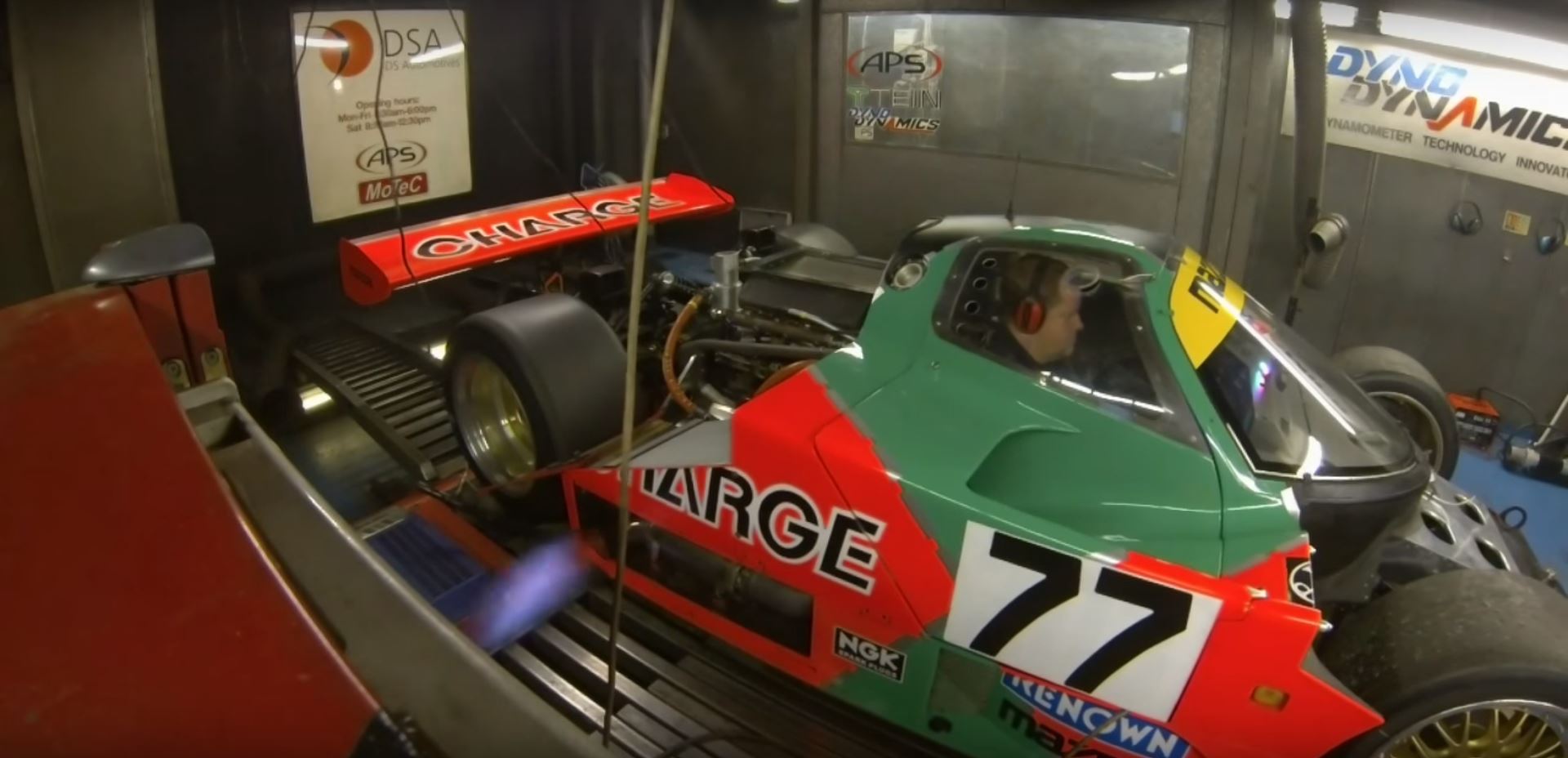

In the pantheon of motorsport engines, where the likes of Formula 1’s V-10s, Subaru’s Prodrive EJ, Formula E’s whining electric motors, and the guttural roar of Corvette Racing’s Le Mans V8s hold special seating, the maniacal chatter of Mazda’s naturally aspirated four-rotors reign supreme.
Mazda’s 767 and 767B prototype racers had a lackluster birth. The newly developed 13J Wankel was a hellion, developing over 600 horsepower, but it took just two years of development, and a race record not worthy of writing home about, to seal its fate and give birth to the better known 787.
While the 787 and 787B went for broke in nearly every respect as Mazda hunted a win at Le Mans, and the details and history of the 787 and 787B’s aerodynamics, chassis, weight reduction, and looks could fill multiple books, what makes the 767 and 787 series’ special is their psychotic four-rotor engines.
Designated as the 13J Wankel and R26B respectively, the naturally aspirated rotary engines have no comparison. The 13J Wankel was Mazda’s first foray into a four-rotor design and used in the 767 to compete in Le Mans’ Group C class. As mentioned, the engine developed 600 horsepower and had a redline of 9,000 rpm. However, Mazda knew that it had to do something to beat Ferrari, Mercedes, and Le Mans’ other teams.

Mazda tapped Nigel Stroud to redesign the 767, with the first of his changes being the removal of the 13J for the all-new R26B four-rotor. Using a continuously variable intake system, three spark plugs per rotor, and carbon fiber apex seals, at full trim, the 787’s R26B was capable of producing 900 horsepower for qualifying. Engineers then detuned the car to 700 horsepower for “race longevity.” The four-rotor engine was coupled to a 5-speed manual transmission sourced from Porsche.
In Mazda’s hunt for Le Mans dominance, the 787s original 9,000 rpm redline was reduced over the years, again for race longevity, to just 8,500 rpm. After some teething issues with the car, and a number of lackluster performances throughout its debut, Mazda hired veteran Formula 1 ace Jacky Ickx to help prepare the car for the 1991 season. The gambit paid off as the car won outright and became the first Japanese manufacturer to win the race. A record that was held until last year when Toyota claimed total victory.
As for the 767 and 767B, their history has all but been eclipsed by their progeny. Motorsport and Mazda enthusiasts holler and hoot whenever either a 787 or 787B flies by at some historic race. The same can’t really be said of the 767s, as they’re often mistaken for the later series. As for the noise of the two, they equally sound brilliant and we can’t get enough of that four-rotor buzz. There’s nothing like it.
Take a second, close your eyes, and picture yourself standing on the Mulsanne straight before the FIA put in the chicanes.